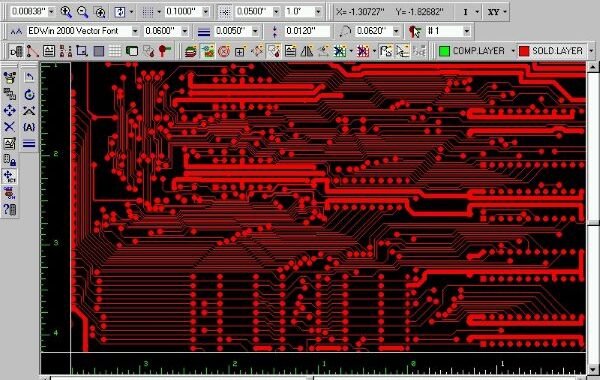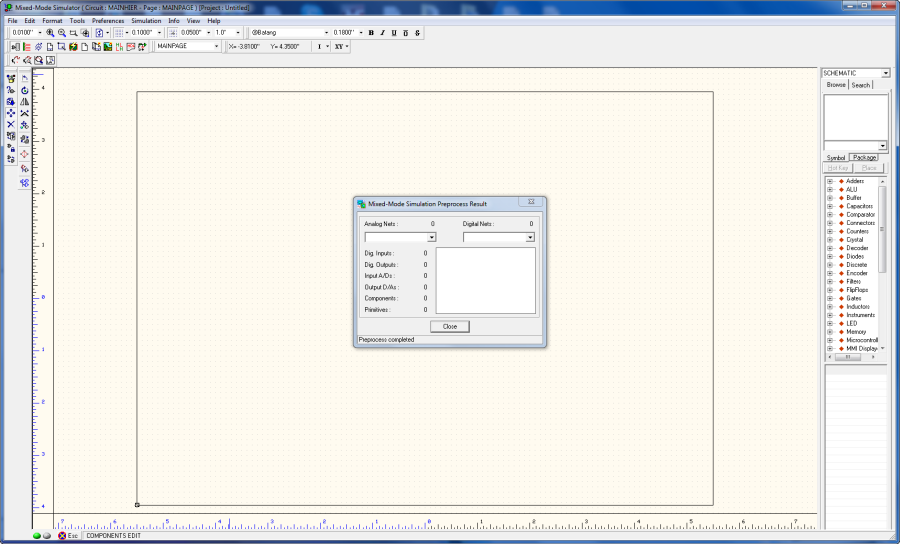Welcome to our dedicated page showcasing a carefully curated collection of EDWinXP video tutorials available on YouTube. Our aim is to provide a valuable educational resource for individuals seeking to enhance their proficiency with EDWinXP, a versatile software platform for circuit design and analysis.
Within our collection of EDWinXP video tutorials, you will find a structured approach to mastering various aspects of the software. Whether you are a novice or an experienced user looking to deepen your expertise, our tutorials offer practical insights and guidance.
Our tutorials commence by acquainting you with the EDWinXP interface and its configuration options. This foundational knowledge ensures a smooth start for users as they embark on their journey of creating schematics and diagrams.
A prominent segment of our tutorial series is dedicated to the intricate process of VHDL to diagram conversion. We systematically demystify this process, enabling you to seamlessly translate VHDL designs into visual diagrams within the EDWinXP environment.
For those engaged in digital circuit design, our tutorials delve into the transition from truth tables to diagrams. These tutorials elucidate how to effectively represent logical functions graphically, thereby enhancing circuit design proficiency.
Furthermore, our tutorial series explores advanced topics such as DC, AC, and operating point analyses. These tutorials empower users with the ability to analyze circuit behavior under various conditions, a fundamental skill in engineering and design.
The comprehension of concepts related to poles and zeros is essential, particularly in control systems engineering. Our tutorials provide an in-depth examination of these concepts, equipping you with the knowledge required for effective control system design and analysis.
In addition to circuit design and analysis, our EDWinXP video tutorials comprehensively cover the domain of PCB design. You will find practical demonstrations on creating, editing, and optimizing printed circuit boards, simplifying the process of transforming schematics into functional PCB layouts.
Whether your endeavors involve academic projects, professional pursuits, or personal interests, our EDWinXP video tutorials serve as an invaluable resource, empowering you to maximize your utilization of this potent software tool.
Whether you are just embarking on your journey with EDWinXP or are a seasoned user looking to broaden your skill set, our video tutorials are a dependable companion. Join us in this educational endeavor as we unlock the potential of EDWinXP, making complex tasks accessible and pragmatic.
For a quick grasp of how to take your first steps with EDWinXP, read this article.
| Topic | Video |
|---|---|
| Creating Page Notes, Design Notes and Printing of Schematic | |
| Filters Design | |
| Initial Schematic Setting | |
| TruthTable to Diagram Generator | |
| VHDL to Diagram Converter | |
| AC Transfer Analysis | |
| DC Transfer Function Analysis | |
| Operating point Analysis | |
| Pole Zero Analysis | |
| Small Signal AC Analysis | |
| Transfer Function Analysis | |
| Transient Analysis | |
| Copper Pour creation and Copper Pour flood test | |
| PCB Traces Clearence Check | |
| PCB Traces Connectivity Check | |
| Electromagnetic Analyzer | |
| Thermal Analyzer | |
| Signal Integrity Analyzer |







